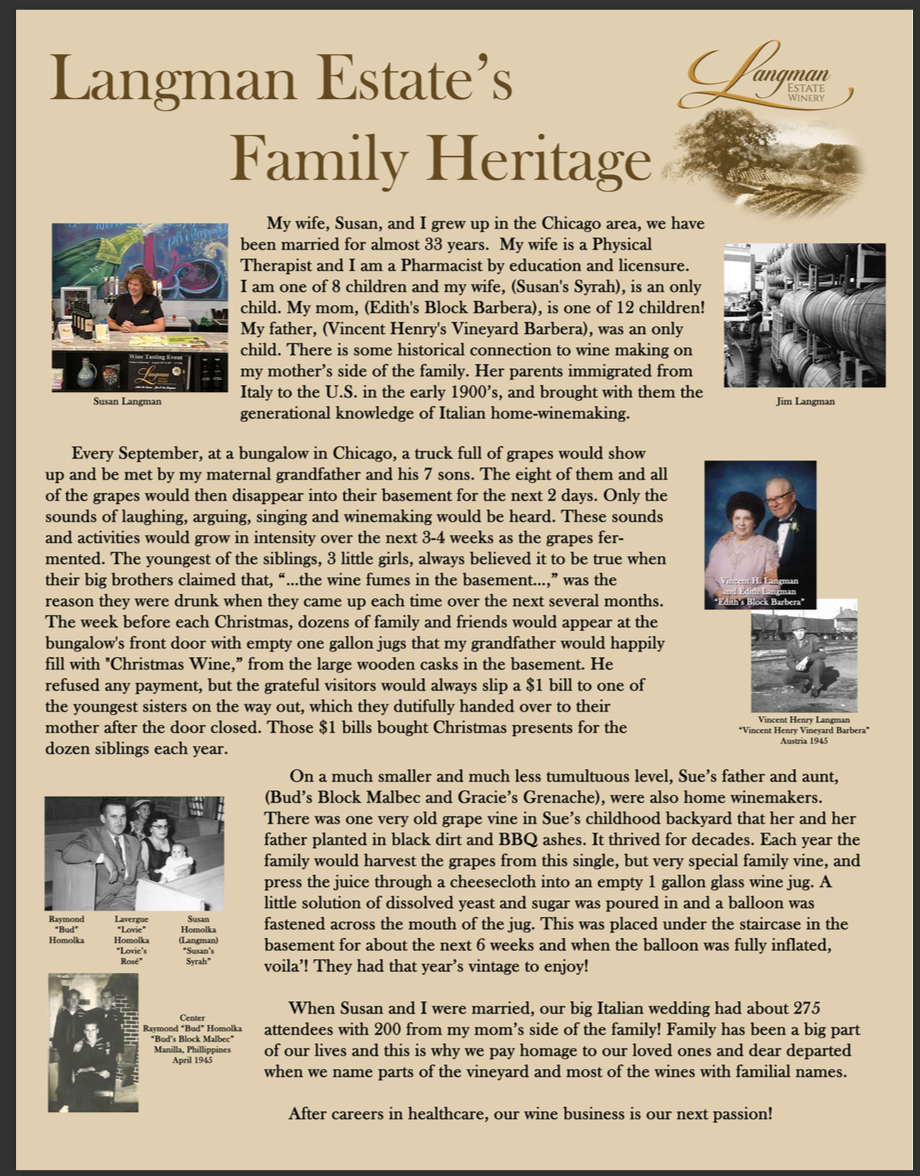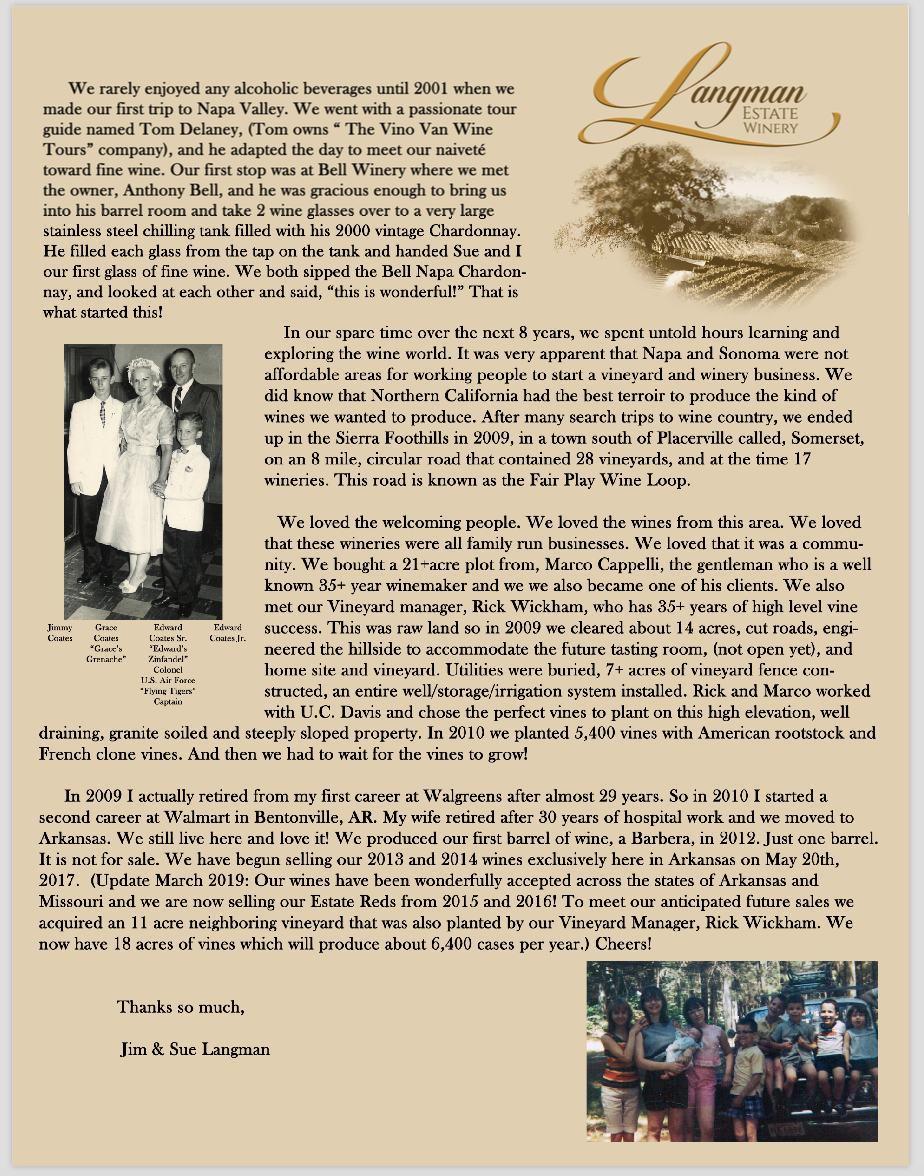Top 2 Keys to Tasting Wine!
How to taste WIne
Wine is especially that for which you have pai a premium, is worth more than a quick glug. So perhaps this section should be entitled Wine Appreciation, because there is a lot more to judging the quality of a wine than merely tasting it, #1 Recomendation, you sip and savoir wine, you don't drink wine. Predominantly it involves smell, using that organ which protrudes from the front of the face above the mouth. Despite this simple fact, however, many regard those that know enough to swirl and sniff their wine as pretentious wine 'snobs'. But this is not the case. This is how to get the best out of a bottle, and I do it with every wine I drink.
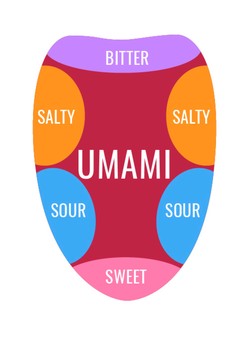
Inspecting the Wine. It is worth taking a good look at the wine, as its appearance can yield a lot of information. Its best to view the wine against a white background, in order to avoid mistaking the color. This doesn't have to be anything technical - a white plate or tablecloth will do. Another good point to make is that the receptacles should be made of plain, clear glass-trying to gauge the intensity of a red wine through blue glass is nortoriously difficult.
Color: The color of a red wine will give a clue as to the age of the wine. Many red wines start life as a deep purple colour, sometimes almost opaque. With time,however, the wines lose this youthful intensity, and begin to take on a paler, tawny, brick red hue. Initially this appears at the rim of the wine, but as the years go by the whole wine will take on this colour, fading to a brick red or brown. The colour of a red wine may give a clue not only to the age of the wine, however but alsoto the grapes which have been used. This is because diffferent grapes produce wines of differing intensities of colour. Pinot Noir tends to be pale, for instance whereas many other red grapes, particularly in their youth, would be expected to be inky purple-black.
Similar infromation may be gathered from inspecting a white wine, although the pattern of colour change as a white wine ages different. A good example is Sauternes, the famous dessert wine of Bordeaux. This wine starts off a lemon gold colour, but unlike a red wine, which becomes paler as it ages, this wine deepens turning a rich, golden amber. This colour change is gradual, occurring over many decades. As with red wines, the colour of a white wine will also give some clue as to the grapes used, and also from where the wine oritinates. Cool climate wines tend to be less richly coloured, hence Burgundian Chardonnay will be paler than an Australian eample. Certain grapes have an almost characteristic hue, such as the green tinge of Reisling
Legs: This little used tasting term refers to the oily droplets of wine that run down the inside of the glass after the wine has been swirled. It was used more frequently in times past as many believed that slowly forming oily legs, reflecting either high alcohol content or the presence of sugars, were an indication of quality. Less to assess these qualities on the palate rather than with the eye.
Smelling the Wine
Swirl the glass to throw the wine up onto the side of the glass, thus increasing the surface area of wine in contact with the air. It is at the interface between wine and air that aromas are released and thus increasing the surface area helps to make the aromas more apparent. The agitation of the wine, of course, also helps. To swirl effectively, don't fill the glass too full-in fact less than half full is recommended. Be gentle, in order to bring the wine up onto the side of the glass without spilling it altogether. If you find you are spilling wine, and haven't overfilled the glass, place the base of the glass on the table and using a few good cirular motions on the table top to get the aroma going.
Once done, stick your nose in the glass and take a good sniff, and think about what aromas are coming up from the glass as you do so. Young wines will have primary aromas, relating to the grape variety. Such smells are often fruit related, and hence wines are described as smelling of blackcurrants, raspberries, and so on, or maybe simply as :fruity"
As wines age more secondary aromas develop, which may be more earthy or animalistic. I believe that the bouquet of a wine is the most enjoyable part of the experience, more so than actually tasting it. terThe aromas generated by a glass of fine wine can be many, intertwined in a most intimate and complex manner. The aromas of a wine take many different forms, and very rarely does a wine smell of grapes-but that is because the grapes most of us are familiar with are table or dessert grapes, which are unsuitable for making wine.
At Last -Tasting the Wine!
There is a lot more to describe when tasting the wine than simple flavour. Flavours are often as expected following the detection of certain aromas. On the 'palate' (the term used to describe the characteristics of the wine detected in the mouth), however, other elements come into play. Detecting the absolute presence and relative quantities of these substances tells you about quality, aging potential, how well the wine will drink with food, and so on. This empowers you to select good wines, and discard bad ones, as you analyse the wine and understand what it is you don't like about them.
When you taste wine, it is implortant to relise that little of the flavour that can be sensed actually involves the tongue. Much more vital are the nasal chemoreceptors that are involved in smell. Aromas from the wine in the mouth pervade the upper airways, and it is sensations from the nasal receptors that we use to 'taste' the wine. (This is why it is diffiicult to taste foods when you have a head-cold). So breathe in and out through the release the aromas, and probably raise a few laughs.
Pay attention to the way the wine changes as you hold it in the mouth. First impressions on taking the wine into the mouth may be referred to as the forepalate, followed by the mid and endpalate, leading up to the finish.
The finish describes the sensations derived from swallowing the wine. It will often be different to how the wine came across on the palate, so take note. The flavours may linger for a while on the palate after the wine has been swallowed, and this is referred to as the length. The more length a wine has, the more time you have to enjoy it, and it's probably true to say that such wines are generallly better quality. Last of all, don't forget to spit. Not necessary most of the time, of course, but at large trade tastings it is the only way to stay upright. And long term, of course, it protects the liver. If you do go to a large public tasting and are nervous about spitting, don't be. Get yourself over the receptacle, don't be afraid to lower your head towards it some way and simply release the wine from your mouth, almost letting gravity do the job. As you get more confident you may be a little more directional in your technique, but don't confuse confidence with inebriation. Even when spitting, some alcohol is absorbed via the mucous membranes of the mouth, and some via the small part that is inevitably swallowed.
At Least 28 Napa Wineries With Major Damage or Destroyed. Here's a list.
Fires in THE Valley!
Here's a partial list of major damage just in Napa Valley proper.
$2 Billion Dollars in Damage
What can/should be done?
Another year of raging fires across California in 2020, and there is still at least a month to go in our annual, "Fire Season". I've written about the history and challenges and arguments over the causes and solutions to the problem from all points of view, but one fact is undeniable: California MUST perform a massive "Reduction in Hazardous Fuel" in their forests. There are 50+ years of dead trees and underbush on much of the public lands. (I know, I know, everyone can be mad at me from all sides, but live and/or be a property owner in California in the path of these fires and you will come to the same conclusion.) Good news is that California and the Federal Government have agreed to undertake a massive collective effort to start doing just that. This will be a multi-billion dollar, 5+ year effort, but it will thankfully start happening. Too many lives, homes and property have been lost.
Napa Valley is the best known wine region in the United States and generates an estimated $40+ billion annually to the national economy. It is some of the most expensive vineyard land on the planet. There were multiple fires in Napa and Sonoma in July and August and then the Glass Fire started September 27th and burned over 68,000 acres. 100's of home and businesses were destroyed. There were also at least 36 wineries heavily damaged or totally destroyed. (See a partial list below)
There is some good news. There are still over 500 Napa Valley Wineries fully intact. They are still challenged greatly with COVID-19 business restrictions, but do not have to start from scratch. The larger concern for 2020 is that about 20% of Napa Valley wineries have decided to not use all or a portion of this year's grape harvest due to smoke taint. (Bitter taste in finished wine because of ash and soot laying on the grapes on the vines and infusing phenols and other chemicals into the grape skins.) A large number of other Napa Valley wineries will wait until about Febuary to assess the smoke taint damage in their 2020 post-fermentation wines. This could be a large problem for 2023 when this year's red wines would normally be released.
The property damage in Napa Valley is estimated to be at least $350 million. At least $60 million of wine inventories were destroyed. About 1/3 of this year's grape harvest in Napa Valley is expected to be ultimately found unusable for wine production which will cost about $300 million, and the ultimate cost of lost wine sales will approach $1 billion over time.
Support your faviorite winery!
And remember: Americans Never Give Up!
Most Importantly: Never forget our First Repsonders! They run toward the danger, so that we can run to safety.
Thanks so much, Jim Langman
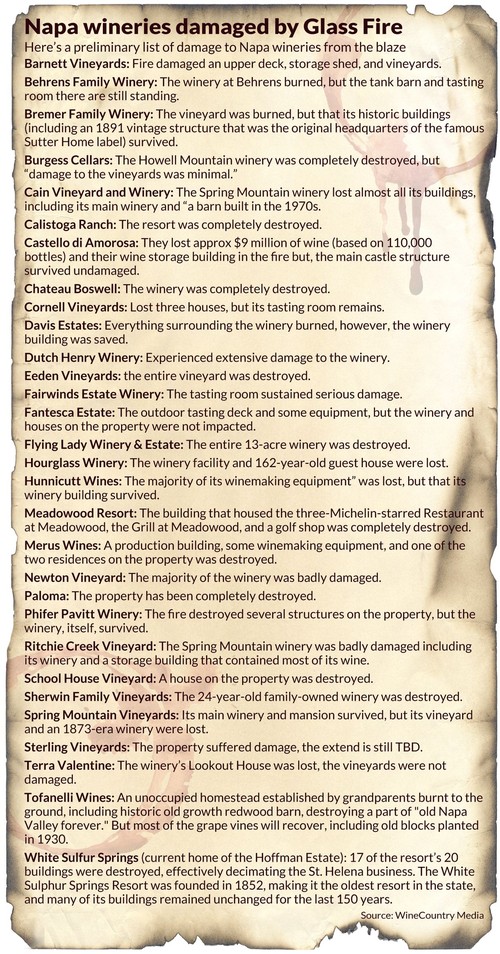
Record California Fires!
This is a republication from the last record year of wildfires in California, 2018. 2020 has surpassed the 2 million+ acres of burned land in 2018 with more than 4 million acres destroyed this year! This content is more relevant than ever. (Jim Langman)
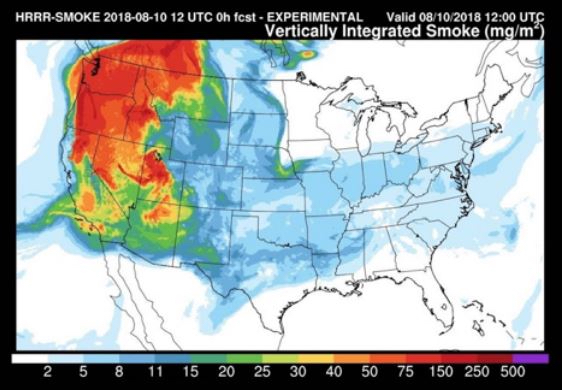
The satellite image above was created by the National Weather Service, (NWS), the same week we were in wine country last month. It shows the upper atmosphere concentration of smoke particles generated by the large fires in California and several other western states. There is visible smoke from coast-to-coast and is evident in almost every contiguous state in the U.S.
You can see a dark orange finger of color cutting right down the center of the northern border of California. Two of the seven largest fires ever recorded in California that are burning this year in northern California are causing most of this smoke concentration. The largest fire ever recorded in California, The Mendocino Complex Fire, has been burning for months and is still not fully contained, has already burned 470,000+ acres. (Source: Cal-Fire) This fire is burning about 40 miles north of Napa Valley and Sonoma County. About 100 mile north of the Mendocino Complex, The Carr fire burnt 230,000+ acres before it was contained last month. (Source: Cal-Fire) We are blessed that our vineyard is at 2,400 feet elevation, in the Sierra Foothills which is right in the middle of the large green streak on the eastern border of the center of the state in the image above.
What does this all mean?
The rest of his article will have 2 parts: How does this much smoke effect a vintage’s grapes and wine and some hard data and facts about California fires. The first part, I hope, you will find interesting and informative. Everyone will probably be mad at me about the second part. That is not my intention, but I do accept the responsibility to present the facts and a viable effort to partially mitigate the yearly fire battle that happens every summer in California.
Smoke Taint
Exposure to heavy smoke for an extended period of time can allow the chemicals in the particulate matter from the smoke to be absorbed into the skin of the grapes. In 2008 there were some large fires close to Napa Valley and smoke taint did effect the thick-skinned, slow-to-ripen Cabernet Sauvignon grapes, which did, in turn, effect the quality of wines in multiple wineries. This could be a challenge this year in Sonoma county and again in Napa Valley.
Fining and Filtering are the processes that wine makers use to eliminate most smoke taint from their wines. These aggressive processes, to varying degrees, will also usually dilute the wines complexity and taste. The wines are enjoyable, but not as robust as usual.
Fining is the technique where the wine maker will add an adsorbent to wine in tanks or barrels. These inert compounds literally attract the volatile phenols and creosol chemicals out of the wine and into their chemical structure, (not exactly the same, but think of a sponge absorbing water off kitchen counter), and then the adsorbents are then removed from the wine. Using activated carbon or synthetic mineral fining compounds has shown to remove between 50 and 70% of the smoke taint chemicals from the wine.
Very fine micro filters can also be used after the fining process. These can remove very fine chemical particles, but the trade off is lower viscosity and concentration of wine particles. Science and the wine makers experience and skill in these decisions is one of the big ways that prove an excellent wine makers prowess.
Most wineries in the Sierra Foothills will thankfully not have smoke taint this year. But this years massive fires have had a different effect on our area by effecting the weather. The smoke in the upper atmosphere has filtered the intense sun that normally results in daytime August temperatures in the mid 90’s and have resulted in most of our August afternoons peaking out in the high 80’s.These cooler temperatures have allowed the start of “veraisin”, the change of color of the grapes from green to dark blue/purple, to happen about 3 weeks earlier than normal. Veraisin signals the onset of the final stage of grape maturation and the beginning of “ripening” of the crop. The grapes will concentrate complex pigments in their skin, increase sugar in the juice and and be ready for harvest about 6 weeks later. (Veraisin is also the favorite time of the year for birds to visit the vineyards and feast on very expensive grape clusters!) Last year we were harvesting into the first week of October. This year we will most likely be finished with harvest by the 3rd week of September. This is not a bad thing. Every vintage of wine has its unique characteristics!
Hard data about California fires
I am a Pharmacist by education and licensure and for decades, have followed the “Scientific Method” and “Evidence Based Medicine”, to construct and/or administer, “Patient Care Protocols”, to treat patients with the treatment regimen that has the highest likelihood of success for that specific patient and their specific needs. Clinicians, of all types, can not use emotional decisions nor superficial knowledge to responsibly and safely take care of their patients. This section is not meant to be published in a peer reviewed journal. I am simply presenting hard data on some macro issues and humbly submitting a partial mitigation proposal. I will give example of both sides of the argument wherever I can.
“There are more and more horrible fires, every year in California and the planet and this is direct evidence of, and directly caused by, Global Warming!”
Fact- These are horrible fires. Absolutely no question about that. So far this this year, in California, there has been at least 5,600 fires, that have consumed 900,000+ acres, burned 1,000+ homes and killed at least 12 people, including 4 firefighters. (Source: Cal-Fire)
“…more and more fires every year…”
Fact- The state of California since the year 2000 has averaged 8,100 fires/year, with an annual average acreage burned of 640,000 acres. These number fluctuate year to year with no evident multiyear-trend up or down. (Source: Cal-Fire)
Fact- The entire U.S. had 3,900 fewer fires last year than the 10 year average. The total number fires and burned acreage fluctuates every year and shows no multiyear trend over the last 20 years. (Source: NIFC)
Fact- On a global basis, the total Global Burn Area for the decade of 1900-1910 was 43% higher than the decade of 2000-2010. This downward trend has been happening for 100 years. (There is a lot more to unravel here, I get it! ) (Source: Bio Science Journal of Geophysical Research)
“…direct evidence of Global Warming…”
First side- “Thousands of scientists agree that there is global warming and the earth is 1.8 degrees Fahrenheit higher than it was 70 years ago.”
Second side- “You are looking only at a relatively short timeframe of temperature measurement that is only part of a much larger and longer natural cycle that the earth constantly goes through.”
Fact- The last 15 years on California has seen some higher temperatures and dryer winters on average. The snow pack on the mountains has not been as deep and this reduces the spring/summer runoff much earlier in the year.
Fact- This is too short of a timeframe to make an absolute judgment about Global Warming
“…these fires are caused by Global Warming…”
Fact- The first 17 major fires in California this year were caused by humans, not lightening strikes. (Also, these forests do not spontaneously combust!) Human causes include downed power lines, machinery, careless smoking and/or campfires and arson. Arson has averaged about 350/year for the last 20 years in California. (Source: CalFire)
Fact- In California from 1910-2017, 95% of all fires were caused by Humans. 5% were caused by lightening strikes, mainly in the rural northeast corner of the state. (Source: U.S. Geological Survey Western Ecological Research Center)
“If the number of fires and the acres burned only fluctuate year over year, and are not on an upward trend, why don’t we just leave mother nature alone and do nothing.”
Answer: Humans!
Fact- The fires last year in California, killed at 27 people, destroyed 4,800 homes, cost $773 million in fire fighting expenses and $1.8 billion in damages. (Source: Cal-Fire)
Fact- The number of residents in California in 1980 was about 24 million. Today, it is about 40 million. (Source: U.S. Census)
Fact- From 1940-2010 the number of homes potentially in the path of wildfires has risen 1,000+ %. (Source: National Hazards May 2018)
Fact- 1/3 of the population, about 13 million people, in California now live in the “Wild Land/Urban Interface”. Summer in California is the worst place in the world for fire climate. (Source: J. Kelly UCLA)
Fact- California is the driest state in the U.S. during the summer months. (Source: NWS)
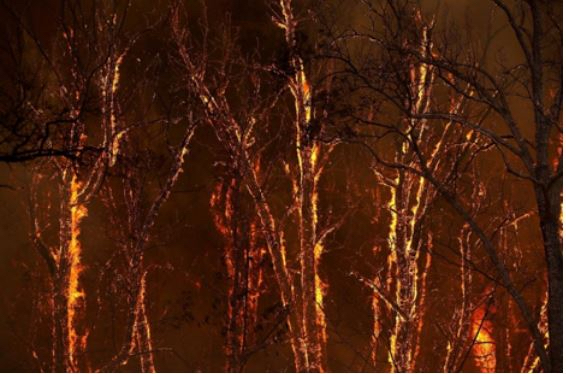
What could we/should we do?
Doing nothing is not the answer. There are at 13 million people in California who live in potential wild fire danger. I am not going to argue about how we got here, but we are here. Can we introduce some responsible forest management back into these public lands? Many people agree that Hazardous Fuel reduction is the most effective way of reducing the frequency and today, the intensity of these major fires. How we do this is where the disagreements start. Dead tree and underbrush removal, controlled burns, reopening some of the forests to responsible commercial logging are all hotly debated.
First side- “The forests have burned and renewed for as long as earth has existed.”
Second side- “There are millions of people at risk!”
First side- “You produce more CO2 into the environment when you artificially reduce hazardous fuel and/or back burn and/or allow logging than the fires produce, because only about 10% of the available carbon is released in a forest fire where only dead trees and underbrush are burned. The fire does not go past the bark of healthy trees.”
Fact- Commercial logging had a 150 year history of “cutting and running” in many parts of our public forests. There were many destructive environmental effects of these unregulated and unenforced times. Modern regulations, equipment and processes have proven to be a sustainable environmental and business model on the private lands where most logging occurs today. Is this absolutely perfect? Absolutely not. But we have come a long way,
Fact- Most commercial logging on public lands in California was stopped 40+ years ago.
Fact- A healthy forest has about 40-60 trees per acre. Many of the fires now burning in California are burning on public land that has not seen Hazardous Fuel reduction in 40 years. These lands now have 100-200 tress per acre, as well as an enormous amount of dead trees and underbrush. Combine this with everything else we have covered and you can see why the intensity of these fires is staggering. Many parts of these large fires are now burning an estimated 50-75% of available carbon in these raw forests. The fire is burning through the bark and killing many large trees. This type of destruction can mean that a forest will take 75-100 years to return to its full health. (Source: U.S. Forestry Service) Doing nothing is absolutely incorrect.
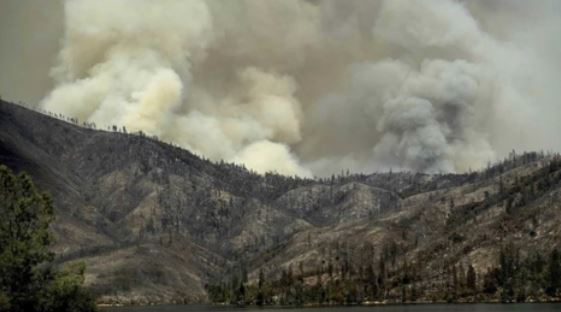
Doing the same thing we did 40 years ago is absolutely incorrect. Absolutes on either side of the points of view on this problem are not based on facts. We must strike a balance that is good for the humans in danger, good for the environment and good for the economy.
Okay, now that you are all mad at me, please remember that I am a Pharmacist and grape grower. I absolutely know that I have not covered everything, but I do know that we must formulate a responsible plan for Hazardous Fuel Reduction in our forests.
Crush 2020!
Crush 2020!
Our vineyard team picked 81 tons of grapes! Now what happens?
Our Winemaking Team Gets Really Busy!
What a long and stunning growing season!
Harvest lasted until Tuesday, October 13th!
Pressing Matters!
For most of us, when we hear the words, “wine grapes”, and, “crush”, visions of of large, round, slotted wooden vats with big metal screw-driven plungers come to mind. Or, more enjoyably, memories of the wonderful 1960’s Lucille Ball Show where Lucy has donned a traditional Italian peasant dress hiked up to her knees happily stomping grapes with her feet, in a huge round vat the size of a small swimming pool! You can actually get the juice out of your grapes with either of these methods, but there is a better, more gentle process to maximize the juice extracted while maximizing the quality of the wine. There are a couple steps to the better process we refer to as “Pressing”.
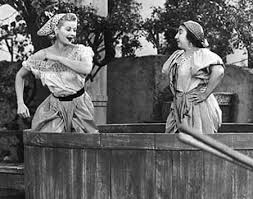
What’s the difference, and why is this important?
Crushing grapes the old way does get the juice out of the grapes but also pulverizes the stems, skins and seeds. Why is this not ideal? The next time you buy a bunch of grapes pull a single grape, with the stem still attached, off the bunch. Gently bite into the stem and you will get a “green” bitter taste. Now peel off some of the skin and gently bite into this. You will get a slightly sour taste that can be described as tannic. Now, very gently bite into the seed. You will get another bitter but woody taste. Compare these to the sweet juice and pulp taste of the rest of the interior of the grape. When wine grapes are pulverized the old way, these bitter tastes can carry through to the final quality of the wines. Tannins are one of the essential final components in a fine wine, but they must be at the proper level. (In our next edition we are going to describe the fermentation process, which involves the skins actually soaking in this freshly produced grape juice.)
“Pressing” steps
- De-stemming
- “First Press”, (cracking the skins, not pulverizing)
- Collect the First Press Juice in the fermentation tank
- Second Press, (bladder press the pulp)
- Collect the Second Press Juice and pulp and cracked skins in the fermentation tank
- Start the fermentation process
This sophisticated method of “Pressing” is more complicated and expensive vs. crushing, but the quality of our wines that it produces is absolutely worth the effort!
When you look at the picture below, you will see a large, square, white bin that holds about 1,000 lbs of grapes, being slowly tipped over and pouring the grapes into a large steel machine. You can see the winemaking crew pulling out any leaves or spoiled bunches and then let the grapes roll under a safety shield where they drop into the de-stemmer that then feeds the grapes into the First Press part of the machine.
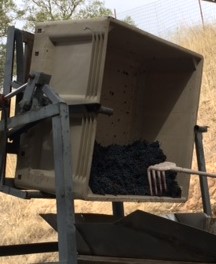
Stems coming out the side of the machine. These are biodegradable.
Below shows the juice coming out of the bottom of the De-Stemmer/First Press machine. The juice goes into the fermentation tank through the hose on the bottom. This First Press gets about 80% of the juice out of the grapes.
The slot on the bottom of the machine shows the juice dropping and flowing into the striped pipe on the bottom.
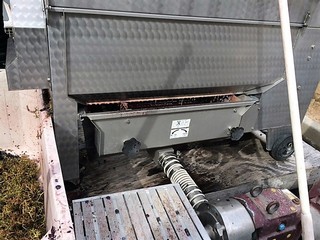
Now all of the good stuff that’s left in the De-Stemmer/First Press machine goes into the Horizontal Bladder Press. This is a large stainless steel machine loaded with all of the pulp from the first press. The machine has a large plastic membrane on the inside that separates the inside of the drum into two spaces. One side is filled with water. The other side is where the pulp is added. The machine then spins the whole drum, and the centrifugal force pushes the water side of the bladder against the pulp and voile’! The rest of the juice gets extracted without pulverizing the skins and seeds then getting pumped into the fermentation tank.
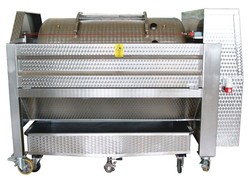
The next step in turning great grapes into great wine is, “Fermentation”.
We'll cover that in a future edition!
Cheers! Sue & Jim Langman
The first drops of juice from the 2020 Harvest on the Langman Estate!
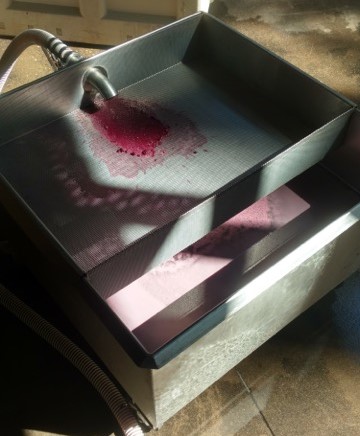
How does a winery owner choose their Thanksgiving Wines?
“One of ours. One of theirs!”
All of us in the Langman Estate Winery family hope that you and yours had a wonderful Thanksgiving holiday! We know that we are blessed to have our faith and family, and also the freedoms and opportunities we are afforded in this great country. We take none of this for granted.
Our recent launches into the states of Missouri and Kansas find us right in the middle of 41 events in a 90 day period, which means that this holiday season we will be staying close to our full-time home in Arkansas. These are not bad things at all! This does mean the we are having much smaller gatherings this year, but they are just as special as the large ones! Thanksgiving was Sue, me and our nephew Bill, (of “William’s Estate Reserve Cabernet Franc” fame!).
“Special Meal. Special Wines!”
As usual, I asked Bill to go to the large wine storage fridge and, “pick out something great!”.
As usual, Bill opened the door and looked at the 100’s of bottles and said, “All of These Wines Have a Story!, and only you know them, Jim. You pick them out!”
My Pleasure! “Let’s pick out a great vintage label and some of our new Langman Estate Winery releases!”
“One of Ours!”
Langman Estate Winery 2015 Edith’s Block Barbera!
Our Langman Estate 2014 Barbera is in the December 2018 Wine Enthusiasts Wines of the Year magazine with and Editor’s Choice 94 Points score! Great Wine! We are sold out! I looked past those 2014’s on the shelf and chose the 2015 Barbera. Another beautiful wine and the 4th vintage of our Langman Estate Barberas which we released May 1st. (We made our first ever barrel of wine in 2012 and it was our Barbera.) I also picked out our new 2018 Robert’s Muscat Canelli. (A beautiful Italian white varietal that is NOT Muscadine or Muscato. It is an off-dry wine that has an amazing bouquet of Honeysuckle, Melon and Pear and a pallet so bright that it fools you into thinking it is a semi-sweet wine. It goes with everything on the Holiday tables!)
“One of theirs!”
Perry Moore Beckstoffer Dr. Crane Vineyard 2006 Cabernet Sauvignon!
April 2009, “Wine Enthusiast’s Toast of the Town, Grand Wine Tasting” event, in the Field Museum in Chicago. 200+ great reserve wines! I was determined to taste through them all in the event’s 2 hour timespan! Just 15 minutes and 7 wines later I found myself looking at two gentlemen standing behind a small table with just 2 single bottles of wine and a sign that read, “Perry Moore”. My first thought of this modest presentation was that these two very nice gentlemen were either home winemakers or this was something very special. The were not home winemakers! They had decades of high quality wine making experience and were making wines from legendary Napa Valley vineyards. The Dr. Crane Cabernet, below, and their 2006 Beckstoffer To Kalon Cabernet were the 2 wines. Great Wines! My personal numerical wine tasting goals for the evening were happily tossed out the window. This was special.
This was early in 2009, about 3 months before we purchased our Langman Estate property, a year before we planted our vineyard and 3 and a half years before we bottled our first barrel of wine. (The 2012 barrel). I knew at that moment that I wanted our namesake wines to be of the exceptional quality that was in my glass that night.
The gentlemen behind the table could not have been nicer nor more enthusiastic as we discussed our plans to also enter the winery business. “You have set the, ‘Quality of Wine Bar’, extremely high for us!”, was my feedback for them. We knew that we had to acquire some of these wines but found out that they were going to only be available as an allocated wine club offering, We would have to wait. Over the next hour we sampled 20 more “Reserve Wines” of various well known producers, but none were Perry Moore. We had to have some.
Our “Benchmark” is set!
With about 20 minutes left in the evening, Sue and I made our way back to the Perry Moore table where I stuck out my hand to again shake one gentleman's hand and tell him that his wines were going to be the benchmark for ours and I needed a bottle of each that night. He was laughing and shaking his head when we released the handshake but then looked down at the 2 folded $100 bills that I had left in his palm.
“Oh, I can’t”, he said.
“This determines the success or failure of our winery plans!”
“This is the benchmark for our family’s legacy business!”
“You’re serious.”
“Yes, sir!”
“This is quite a statement about our Perry Moore wines. We’re honored!”
We had our treasures!
Before we bottled our 2012 barrel in 2014, we opened the 2006 Perry Moore To Kalon Cabernet with the winemaking team to set our bar very high. We sold our first wines in June 2017 and have already received four 90+ point scores on them. We will continue to keep our, “Bar of Quality”, very high! One of our goals is to have others use our wines as their benchmark! Our 2015 Edith’s Block Barbera, 2018 Robert’s Muscat Canelli and the 2006 Dr. Crane wines were the perfect choices for our Thanksgiving dinner!
This was, “The Story!”
“Great People! Great Wine!”
Cheers! Jim Langman

Grapes are harvested!
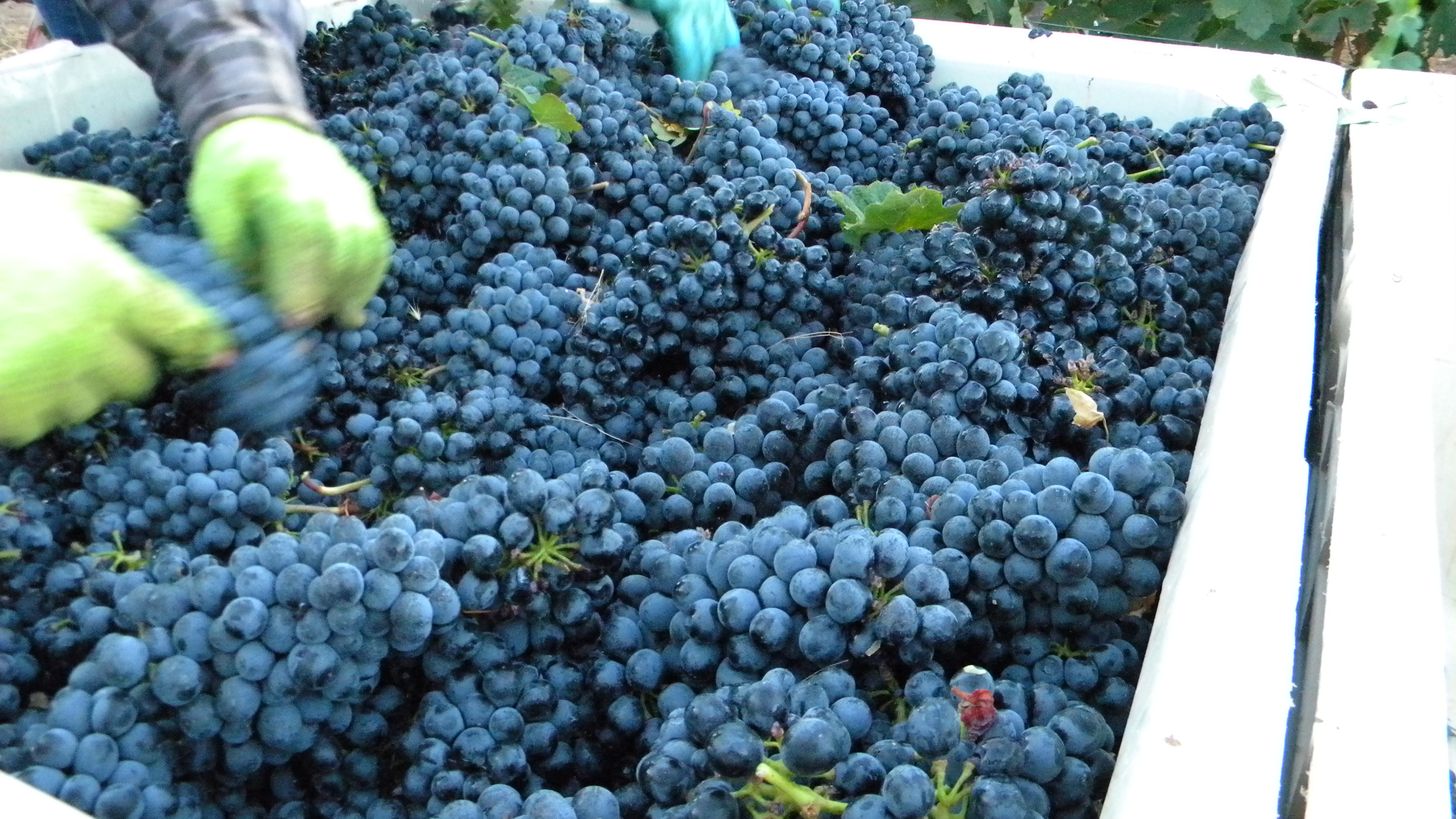
2016 Harvest is Here
2016 was a great wine growing season in Northern California. It was especially ideal in the Sierra Foothills. A wet spring, a very long and dry growing season, great diurnal temperatures, low humidity and a lot of sunshine. The grapes were very happy! And so were we!
Our winemaker and vineyard managers agreed that 6 of our 7 varietals were ready to harvest on October 1st, 2016. And what a great job the vineyard team performed! The “pick” started at 6:30 AM and by 1:00 PM, more than 18 tons of carefully selected wine grapes were on their way to be pressed in the first stage of producing our 2016 vintage of Langman Estate Winery wines. These wines will be spending the next two years inside the winery. (I can’t wait either!) Our vines are now 6 years old and will all reach full, mature production in about 2019. We only harvest ideal grapes, from ideal vines. We made only 1 barrel of wine in our inaugural vintage of 2012 (Vincent Henry’s Vineyard, Barbera).
The Final Tonnage chart below shows that the Barbera, Zinfandel and Syrah vines are almost at full yield, with the Grenache not too far behind. The Malbec is progressing nicely. The Cabernet Franc and Petite Syrah vines are inherently persnickety and will be at full yield, whenever they are good and ready to be! The small quantities of these early vintages, of these last two varietals, are of exceptional quality that will produce wonderful wines. But they will be in very short supply.
Final Brix Counts:
Taken one week before harvest:
Barbera: PH 3.3 Brix 25.6
Grenache: PH 3.1 Brix 26.0
Cab Franc: PH 3.0 Brix 23.3
Petite Sirah: PH 3.0 Brix 20.6
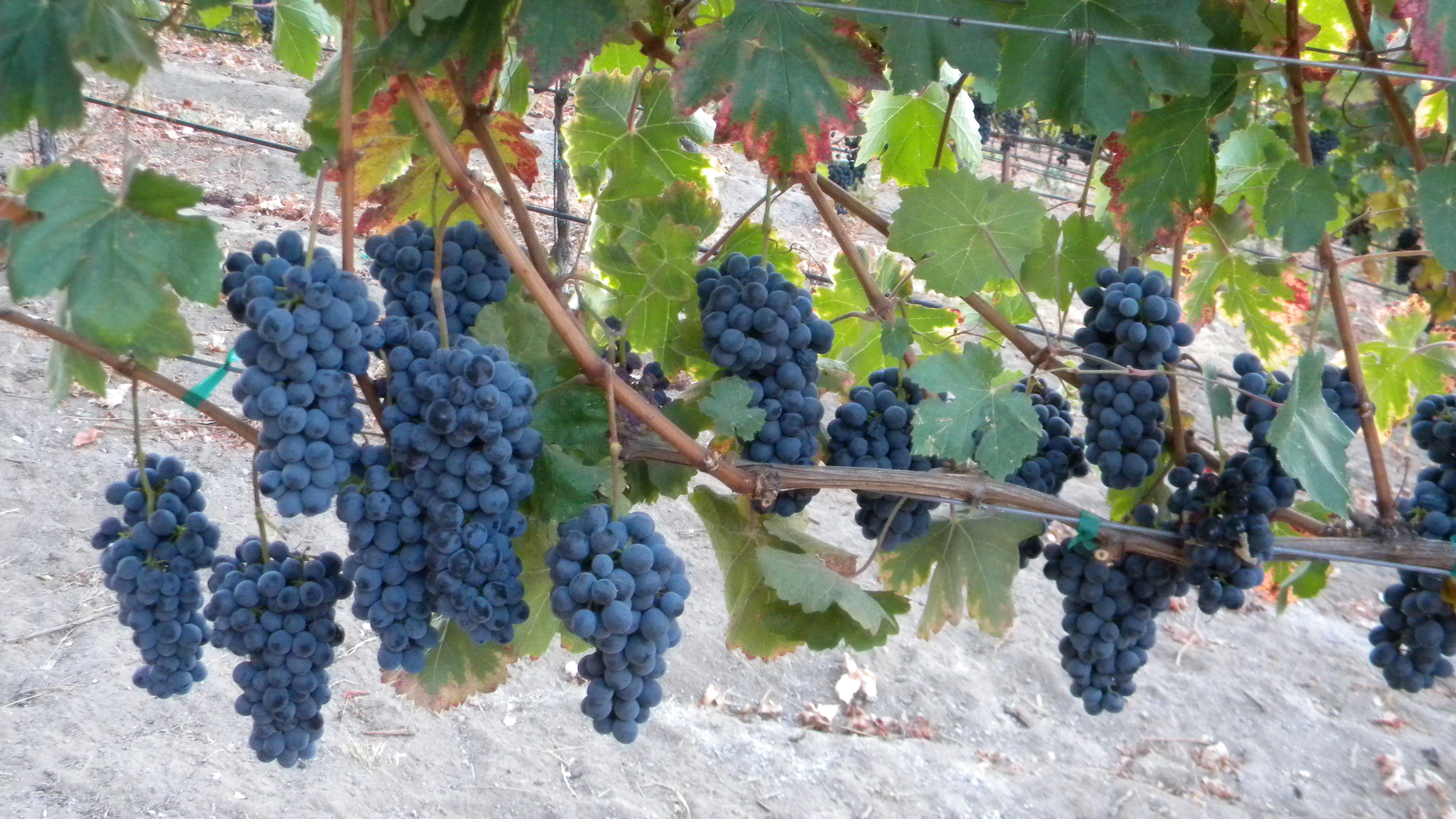
What is Brix?
A scale to measure the level of sugar in unfermented grapes. Multiplying the Brix by .55 will closely yield the wines future alcohol level. Sugar is what the wine making yeast turns into alcohol during the fermentation process. Alcohol content is one of the main components of wine that must be in balance with other factors like fruit, tannins and oak. Too little alcohol and the wine will be too soft. To much alcohol and the wine can be overpowering like a cocktail (or too “hot”).
The first six varietals have now been harvested. The Petite Sirah is still hanging on the vines. The brix reading as of 10/5 was 22.8. It could be two more weeks until we harvest these special grapes. We only harvest the ideal grapes from the ideal vines at the ideal time. This is the big first step in producing ideal wines!
FINAL TONNAGE
110.5 of these bins were filled on harvest day and we are not done!
Barbera: 15,000 pounds = 7.5 tons
Zinfandel: 13,000 pounds = 6.5 tons
Syrah: 12,000 pounds = 6 tons
Granache: 10,000 Pounds = 5.0 tons
Mablec: 4,000 Pounds =2.0 tons
Cab Franc: 1.250 Pounds = .63 tons
Total: 55,250 pounds or 27.75 tons
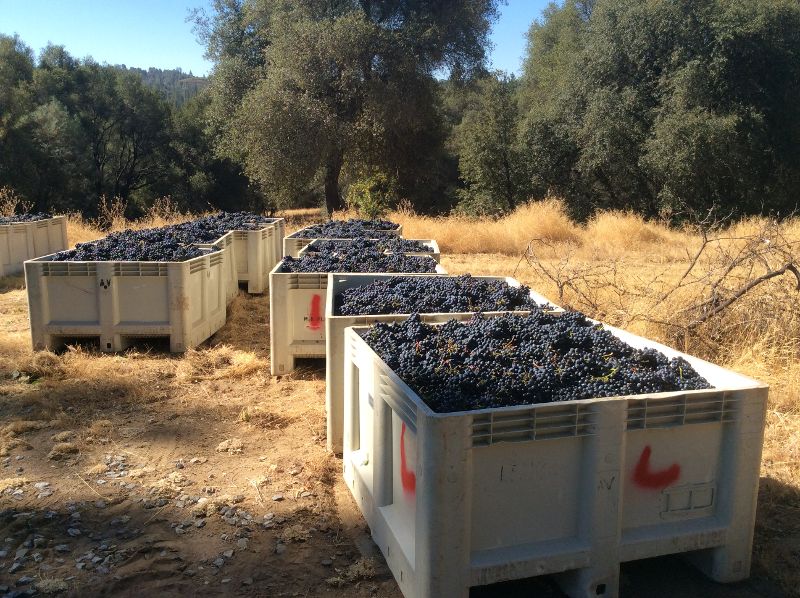
How much wine is that?
The large, square white bins in the picture above hold 1,000 pounds of grapes in each. The white buckets hold about 19 pounds of grapes in each. 1 ton of grapes will yield about 700 bottles of wine. 1 standard wine barrel contains about 280 bottles of wine. 280 bottles of wine is a little less than 24 cases of wine.
Join The family!
Sign Up For Our Newsletter
Keep up to date on the New Arkansas Winery! The latest wine releases, events, and promotions and get 10% off your next order.
